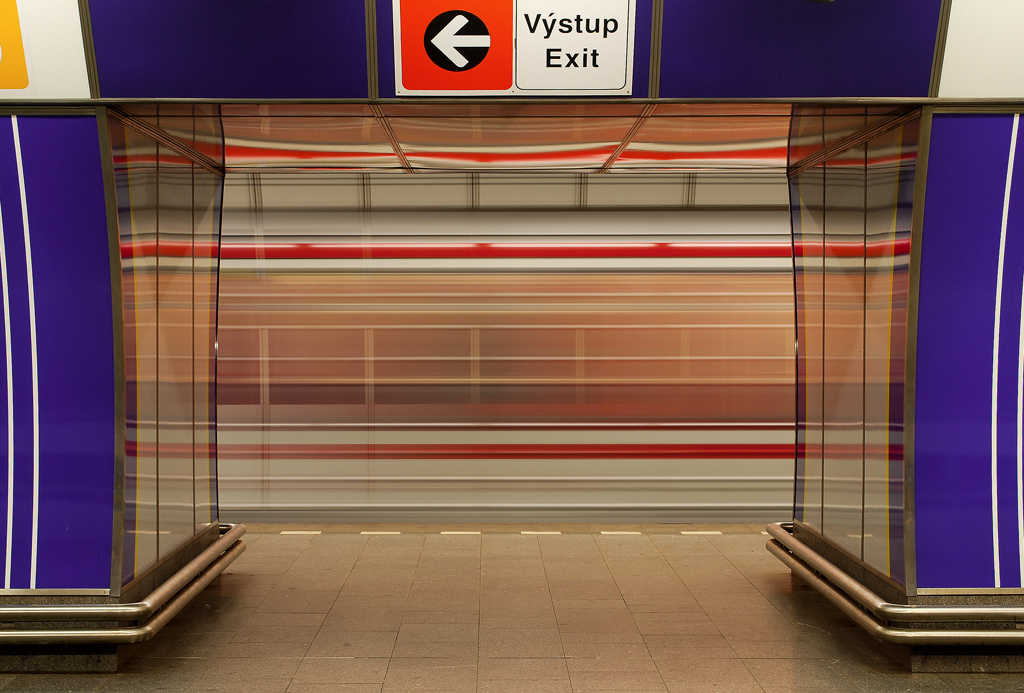
Thanks to this article, you’ll be traveling on the Prague metro with your eyes closed! Here you’ll find ticket prices, metro maps, the best way to get to the airport, streetcar and bus connections… After nearly twenty years in Prague, I can tell you that the Prague public transport system is one of the best in the world (created in 1875, it’s said to be the 2nd best in the world, and 96% of Parguians say they’re totally satisfied with it!) In the course of my many travels, I’ve yet to find anything better, and the local transport system is ranked 6th in the world for speed. Wherever I am in Prague, a city of 500 km2, I never count more than 30 minutes from door to door. With 730 cars, the Prague metro runs like a charm, carrying almost a million passengers every day.
The complete guide to the Prague metro
The entire Prague metro network has full mobile coverage, including deep platforms and tunnels. At one time, the Prague metro even introduced atypical services such as a luggage porter or a single carriage… It’s true!
Two types of ticket – choose the right one!
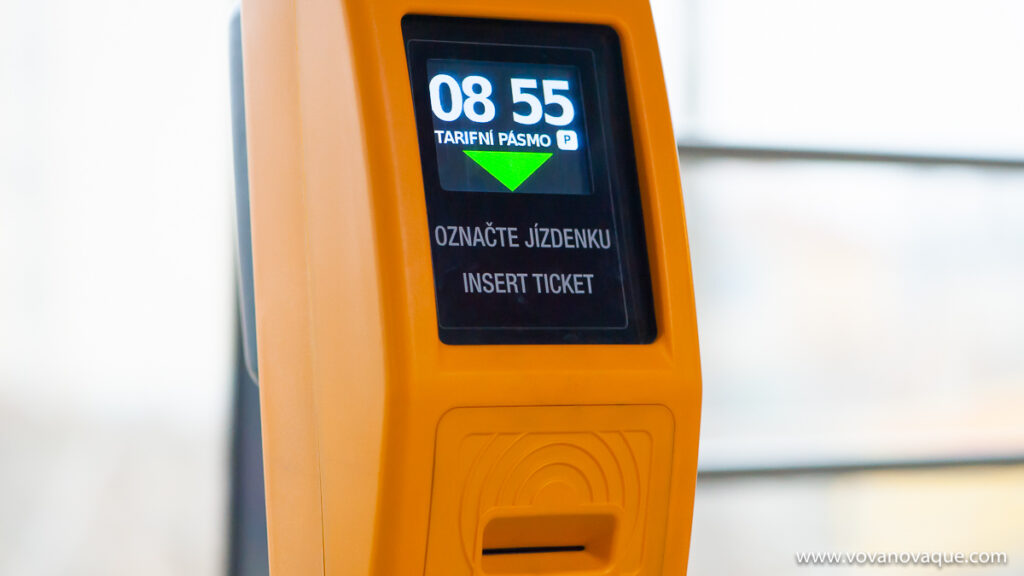
There are two tickets for the Prague metro (valid for all means of transport, including the Petřín funicular and the river shuttle). One for 30 CZK (1.2 EUR) allows you to travel for a maximum of 30 minutes, the other for 40 CZK (1.6 EUR) allows you to travel for 90 minutes in the 4 different zones. This is the metro ticket you’ll need to get to and from the airport.
Even for long-distance travel, tickets are worth around €1.20
Tickets can be purchased individually, or as 1 or 3-day vouchers (see below). Booklets are not available. You can buy these tickets at certain tobacconists, at yellow vending machines in metro stations (contactless payment by credit card) or at a few ticket offices in major stations (including Nádraží Veleslavín, the last station before the airport). Here’s a list of these stations. It’s also possible to buy your ticket by sms, by sending the message DPT42 (90 min), DPT31 (30 min), DPT 120 (1 day) or DPT 330 (3 days) to the number 90206 (no area code). You’ll receive confirmation two minutes later. (Please note that your operator will charge you for this).
Don’t forget to punch your ticket atthe entrance ! The Prague metro is “open”, i.e. without gates. If you’re in any doubt about the length of your journey, take a CZK 40 ticket, as there are many plainclothes ticket inspectors and fines cost CZK 1,500 (or CZK 1,000 or EUR 40 if you pay on the spot, which you’ll be obliged to do).
For full information on ticket sales, click here.
Take advantage of numerous discounts and coupons for 1 or 3 days!
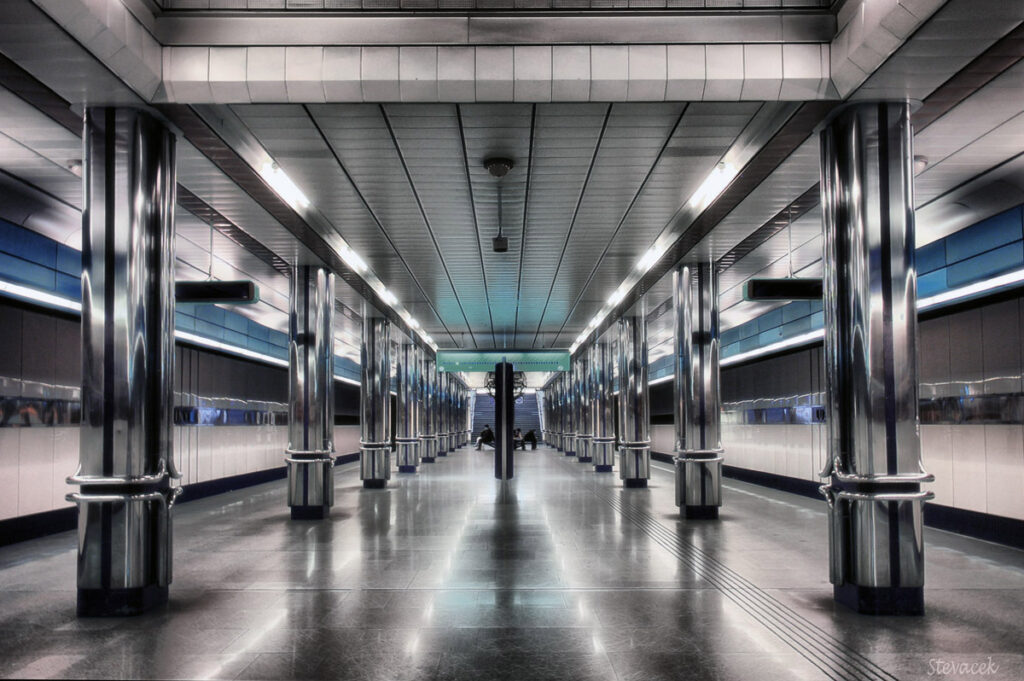
Free admission :
- children under 15 (you’ll need to show proof of identity if you’re stopped).
- seniors over 65 (you’ll need to show proof of identity if you’re stopped).
- accompanying children under 3 years of age.
Discounts: half price for 60-65 year olds.
Buying coupons :
A very good alternative to single tickets is to buy coupons (available from vending machines).
- 1 day(120 CZK or 4.8 EUR)
- 3 days(330 CZK or 13.2 EUR)
For further information, click here.
Fast metro connections throughout Prague
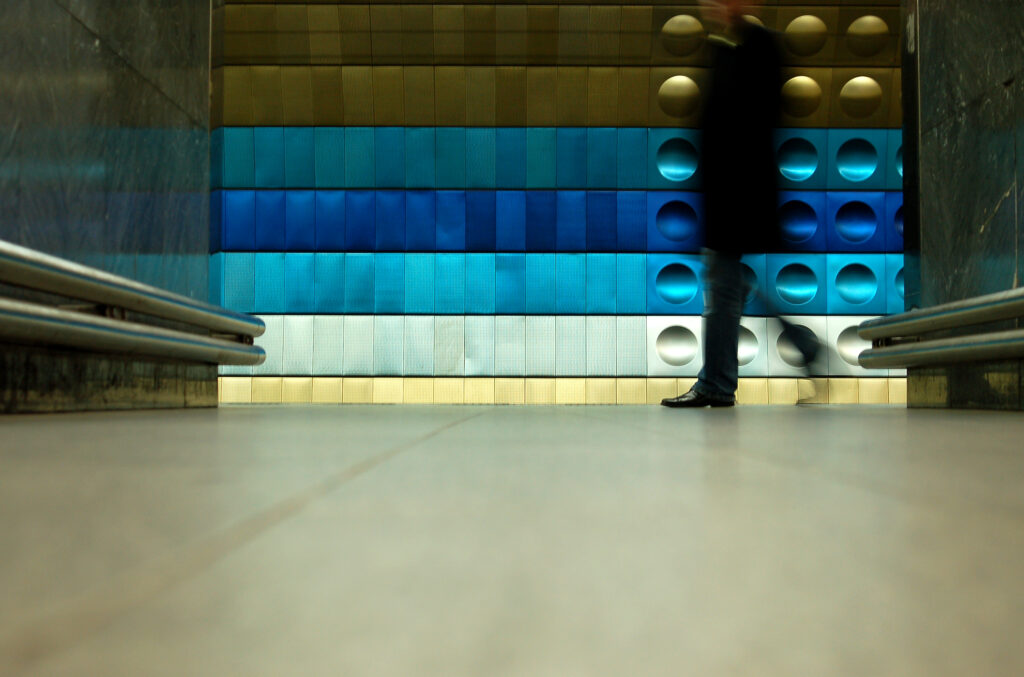
Welcome to paradise! On the Prague metro, there are never any delays or strikes, and when a station is closed to improve service, you’re well directed to the alternative streetcar and bus services. The connections between these different means of transport are perfect.
In Prague, you can cover great distances in no time at all
Prague is almost five times the size of Paris, with half the population! You can find your connections and calculate your journey down to the minute, thanks to this link from the Prague Transport Authority. You’ll know exactly what time your metro will leave, and believe me, it won’t be late – unforeseen events are very rare.
The Prague metro is open from 4.30 a.m. to 1.15 a.m. (the last metro leaves each terminus at midnight)
In Prague, the metro runs at regular intervals: 5 to 10 minutes normally, 2 to 5 minutes during rush hour and 20 to 25 minutes during off-peak hours. The company’s website is very well done. Visit this second link, which will direct you to everything you need to know about the metro (but also the streetcar or bus…). Finally, here’s a handy map of how to get to and from the airport.
The Prague metro is new and comfortable
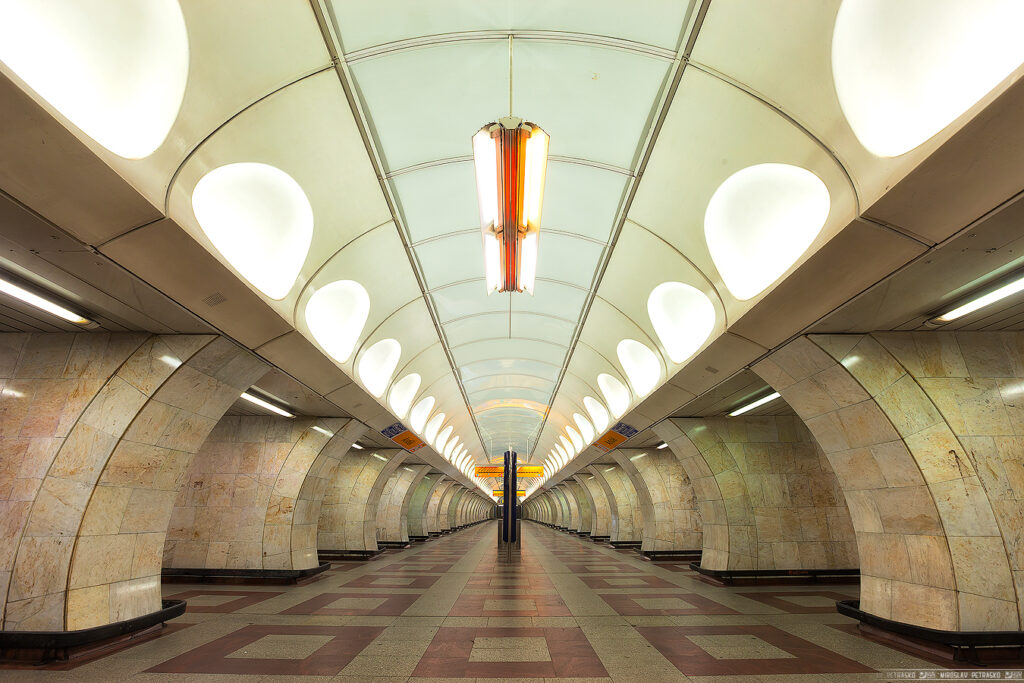
There are three lines (A, B, C, with a D line planned for 2029), each in green, yellow and red, and a total of 61 stations covering 65.2 km
Three stations offer connections: Florenc, Můstek and Muzeum. You’ll never be bothered; I’ve never seen a musician and very rarely anyone panhandling. And in the carriages, you’ll usually find seats. The Prague metro is often well-suited to people with reduced mobility and baby carriages, thanks to its large elevators. The metro dates back to 1974 and is gradually being extended, with new stations being added on a regular basis. Many stations have changed name since the Communist era, as Leninova, Kosmonautů or Moskevská stations have all gone. The latter was built by Russian architects in 1985, while at the same time the Czechs were building the Moscow station Prazhskaya, or Prague in Russian. The Prague station, now called Anděl, is decorated with bas-reliefs inscribed in Cyrillic and corresponding to the realist-socialist canons of Russian art at the time, including one depicting the poet Pushkin and another the conquest of space. Under Communism, 1% of the budget for any construction project was allocated to art and culture. Even motorway interchanges built at the time were adorned with sculpture. You’ll find all the works of art in the Prague metro in this article.
Prague metro map
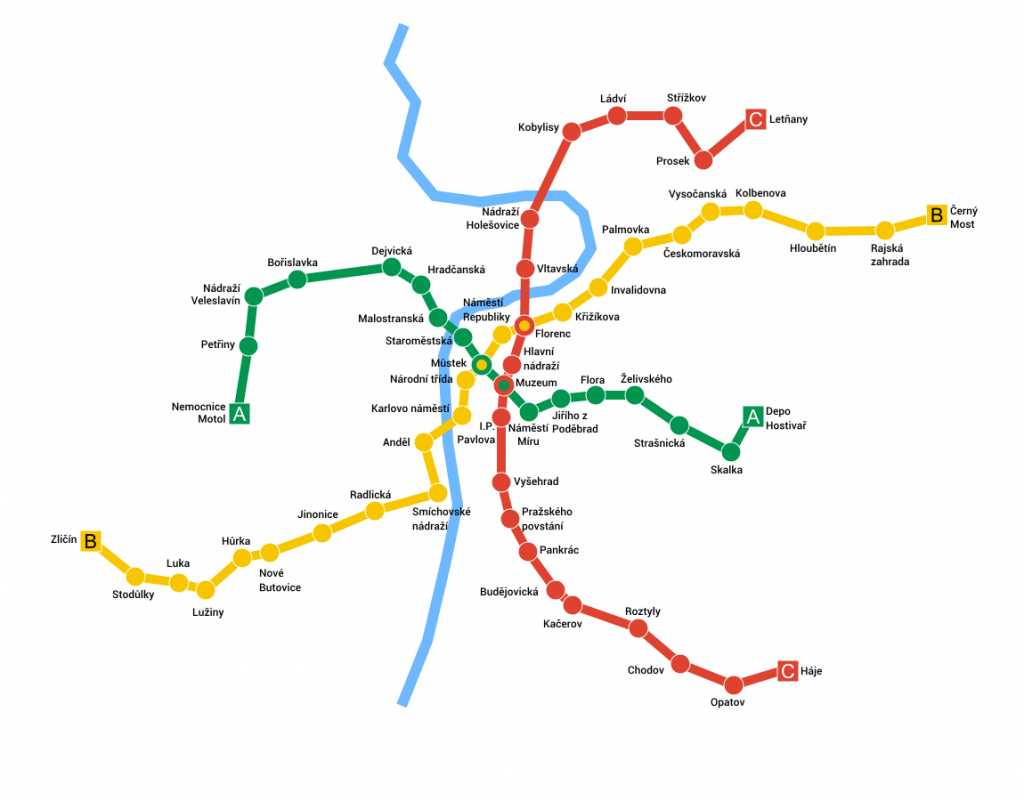
The Prague metro escalators are impressive!
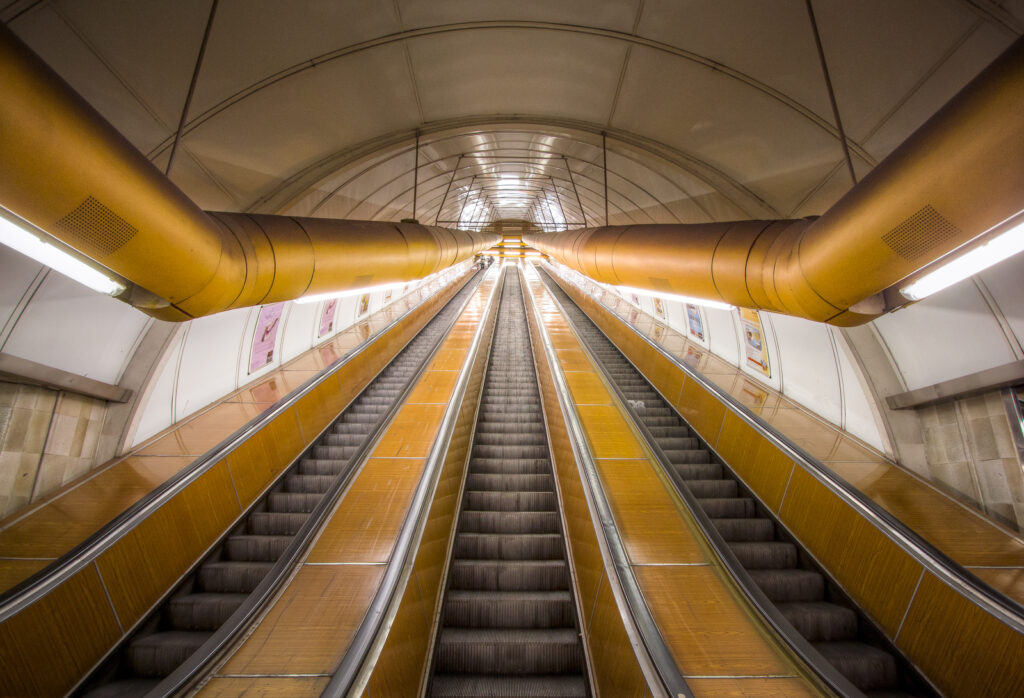
To get to the subway platform, you’ll have to descend a series of sometimes vertiginous escalators. The one at Náměstí Míru is said to be the longest in the world at 87 meters! Here’s a video of it. I can tell you that in winter, as you climb back up (2 min 20), you can feel the draughts! There are still several dozen escalators of this type (Leningrad or Soviet style) in Prague, out of a total of 268. For safety and energy-saving reasons, they will be gradually replaced, as they are too fast (from 90 cm per second, they have already been reduced, in theory, to 75 cm per second after joining the EU in 2004). These escalators are very long and the metro very deep, because when it was bored in 1974, it had to pass under all the pre-existing cellars. And it could also have been used as a fallout shelter during the Cold War in the event of a nuclear attack! This is what we call the “metropolitan protection system”. There are underground hospitals and water tanks. All lines are connected.
Be sure to keep to the right on the escalators if you want to be carried along
As in Paris, the left-hand side of the escalator is for those in a hurry to overtake (there aren’t many of them, and it’s a pity because, over time, this causes more weight on the right and damages the system). You’ll also notice that the ramp often goes faster than the escalator, which means you have to stay awake at all times to avoid falling asleep and possible accidents). Once you’re at the bottom of the escalator, orientation is very simple: a large transverse panel hanging in front of you lists the stations. If your destination is to the right of this circle, your metro will arrive on the right!
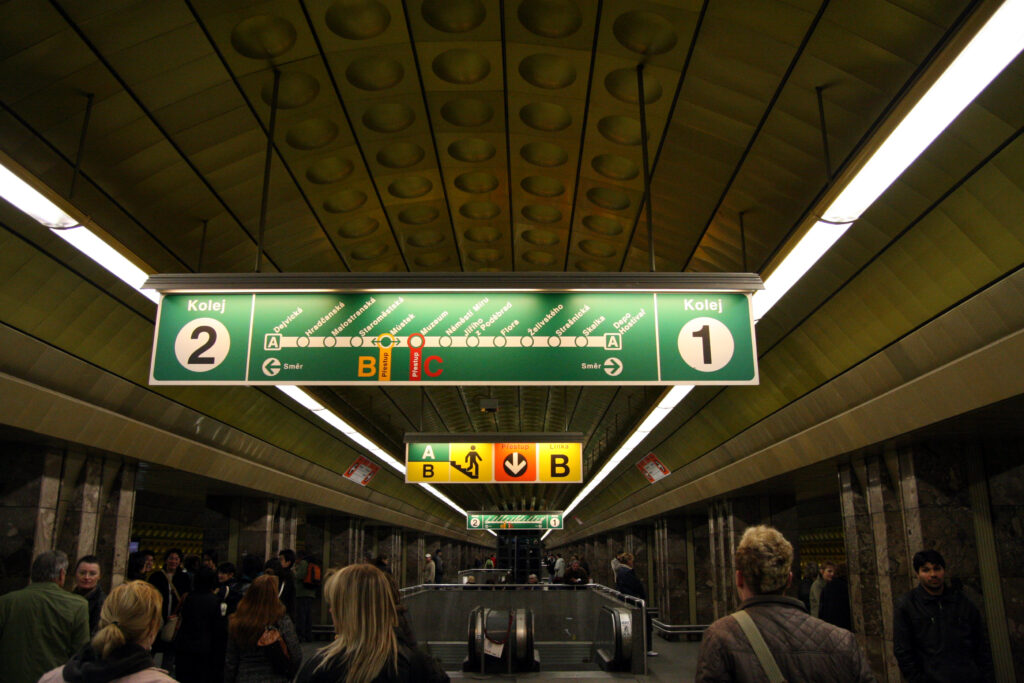
An aesthetically pleasing metro
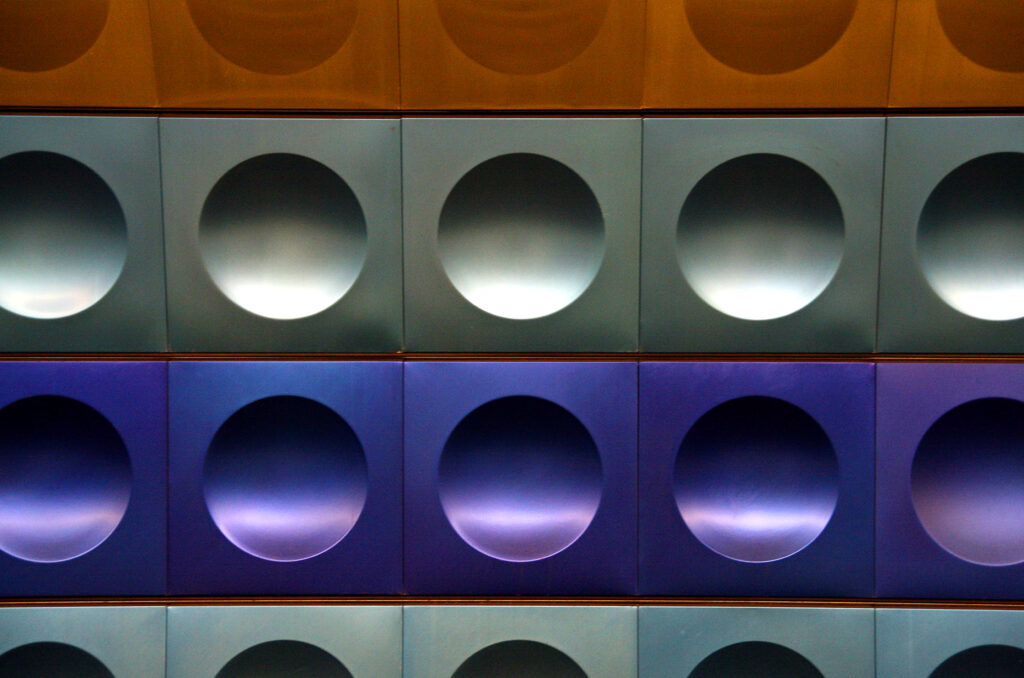
Each station on the Prague metro has its own specific decoration, but most of them are covered with architectural tiles in very well-chosen colors. This is particularly striking on metro line A (1978). The wall panels, made from anodized aluminum parts pressed into the shape of convex and concave lenses, quickly earned popular nicknames like “breast” and “anti-bosom”.

With anodizing, the aluminum pellets were colored using organic dyes. The result is stunning colors, and each pellet has a distinctive, indescribable metallic sheen that you’ll love. Architect Jaroslav Otruba designed the pop art -inspired motifs, and graphic designer Jiří Rathouský came up with the station colors: the golden color at Hradčanská symbolizes neighboring Prague Castle, the green at Malostranská recalls the nearby gardens… These panels, a small souvenir of which you can take home, have more than just an aesthetic function. Their curvature is designed to break the sound waves emitted by the old Soviet trains. I love the stations on line A!
The colors and shapes vary, and each Prague metro station has its own special decoration
In some stations, marble is also very present (walls, floors, columns). In short, it’s a very photogenic metro, as you can see from the photos below… Take some great photos yourself!
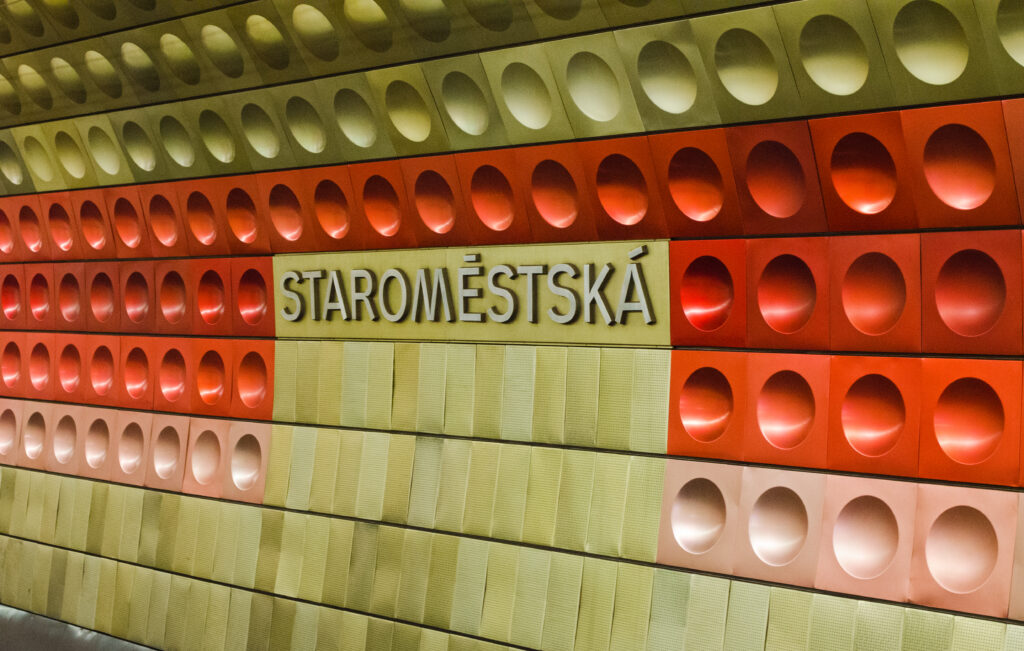
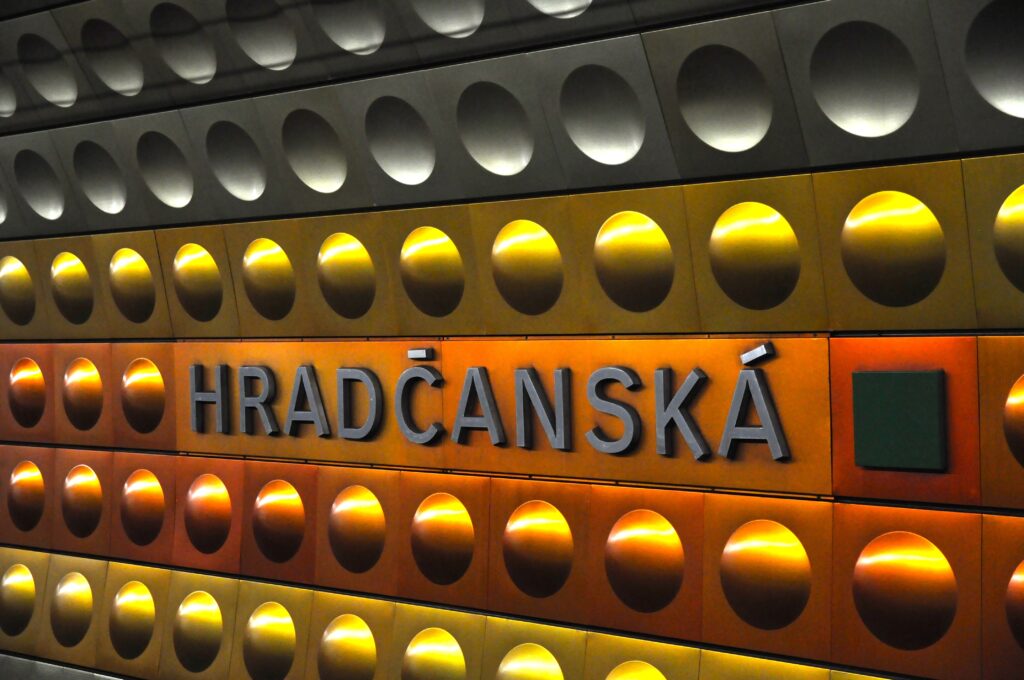
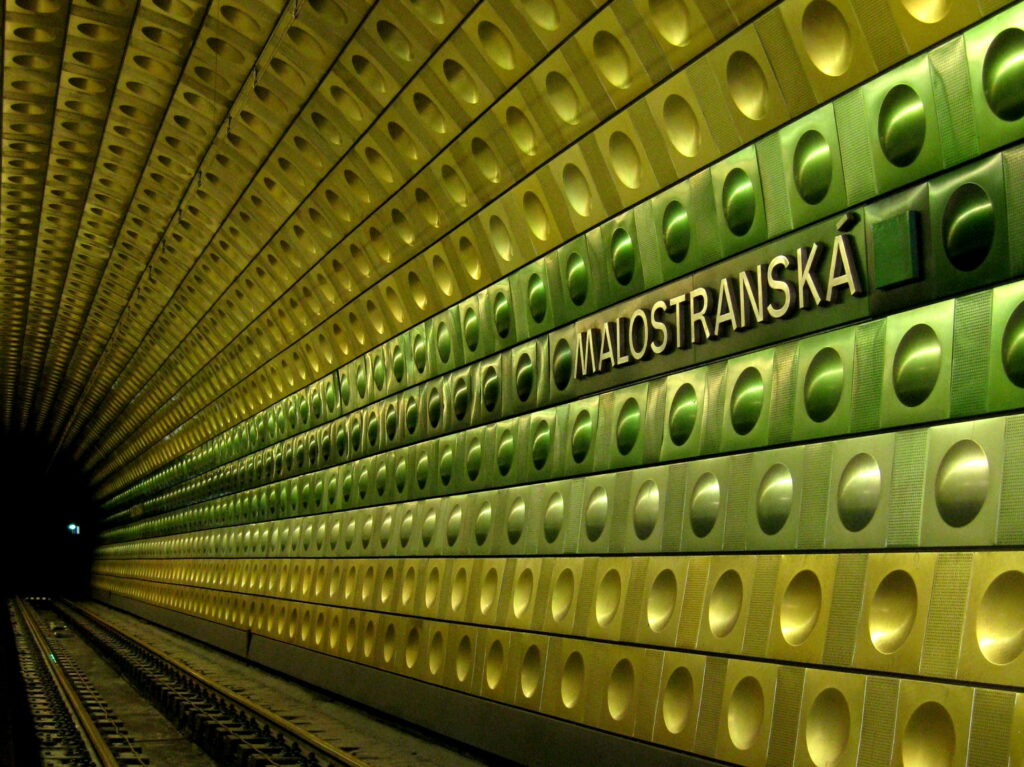
Original services: from suitcase carriers to singles cars
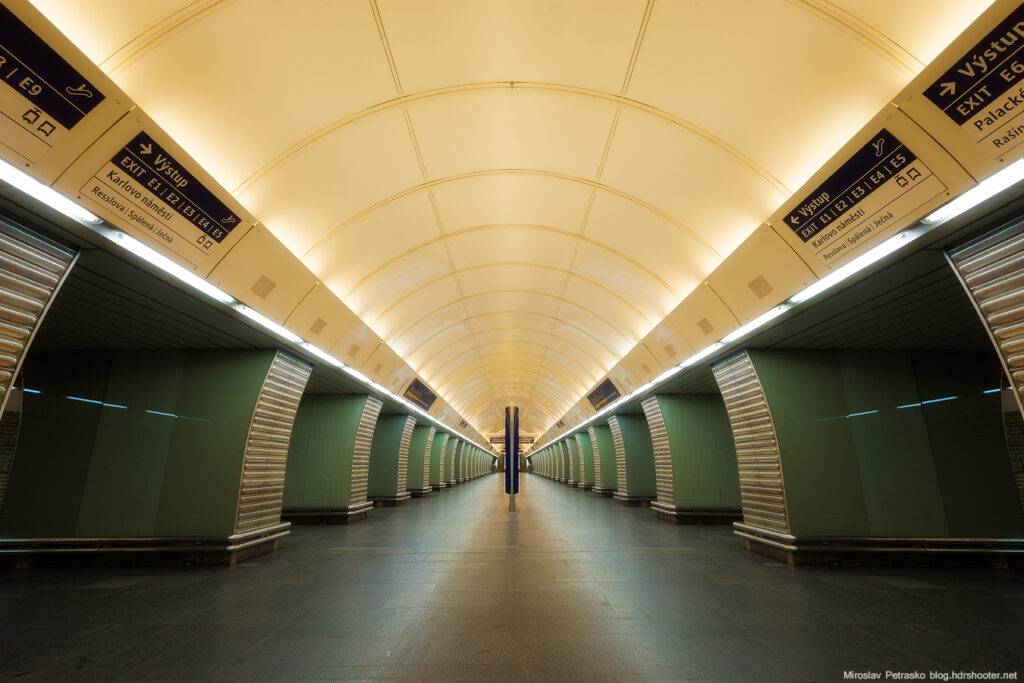
In Prague, the journey from the city center to the airport (metro bus) takes 30 minutes. This is a fairly short journey, and in a few years’ time the train should connect the city center and the airport. The latest metro station, Nádraží Veleslavín, was opened in 2015. The problem was that the escalators had been forgotten, and tourists had to carry their heavy luggage to the exit and the bus. However, local “sherpas” were on hand to help any tourists who wished to carry their suitcases up the 30 or so steps. The problem has since been solved.
Original initiatives in the Prague metro
Last but not least, the Prague transport authority was once concerned about the loves of its users! In November 2013, singles’ cars were introduced, where tongues could be loosened more easily (the last car was equipped with distinctive signs). Unfortunately, this initiative has been discontinued.)
And if you want to extend your stay once you’re back home, listen to the English rock band Radiohead: the opening of the song “A Reminder” lets you hear the characteristic vocal announcement of the subway doors closing…
